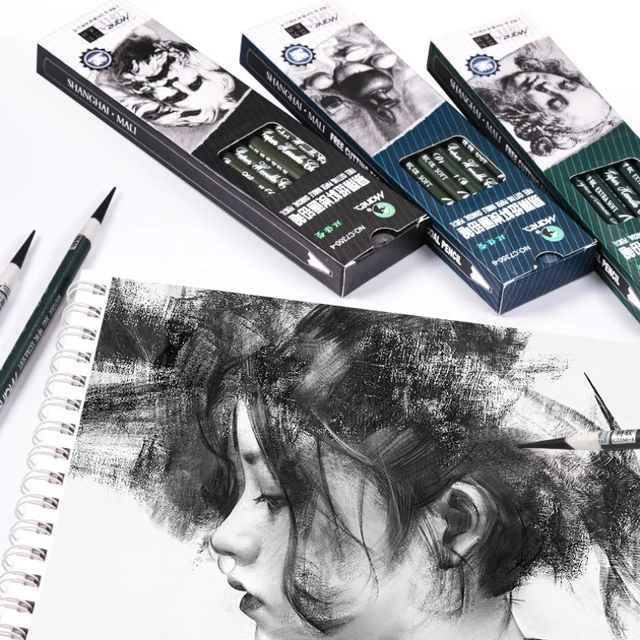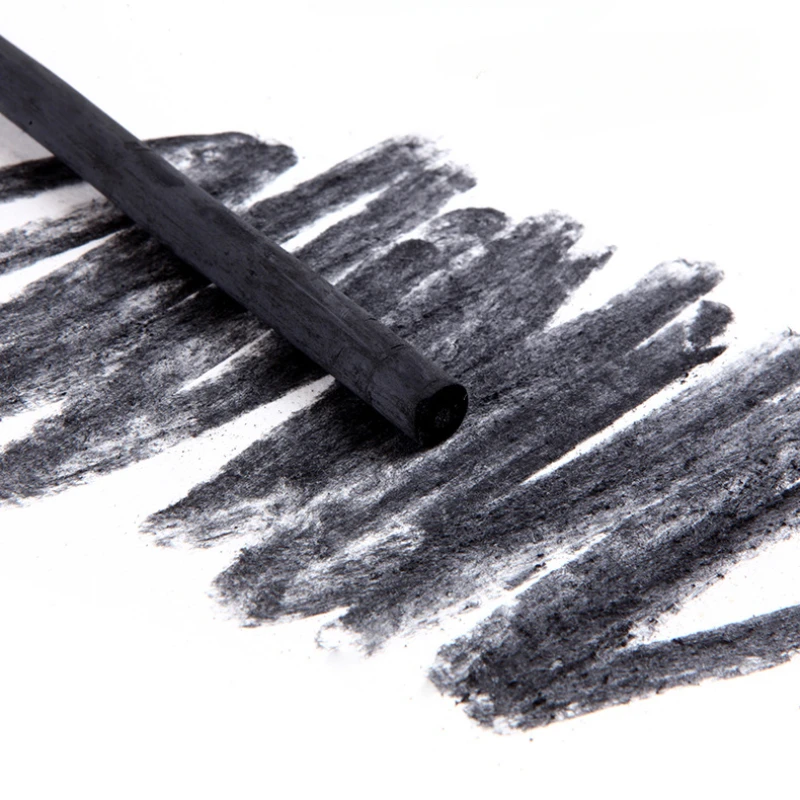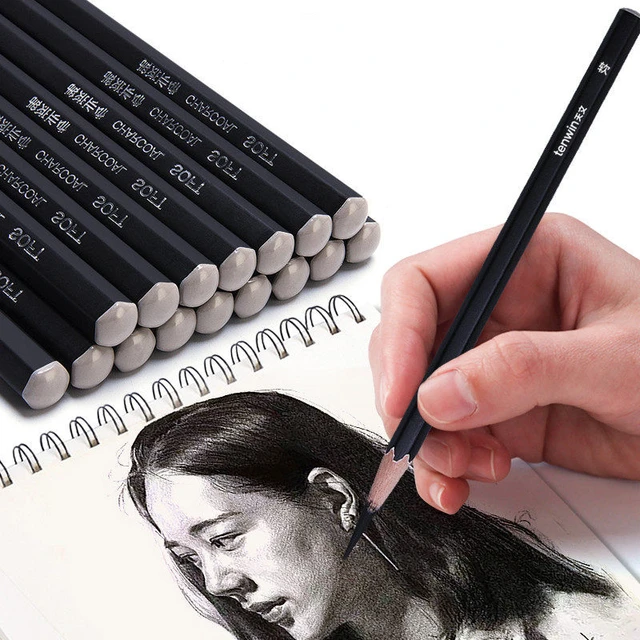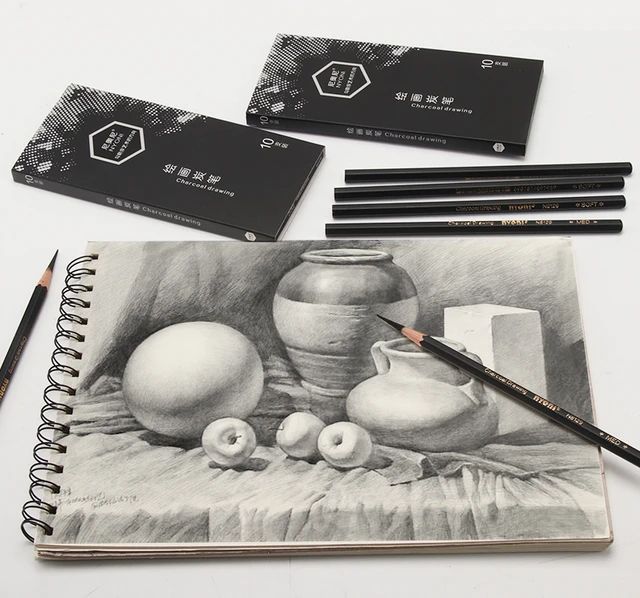Choosing the right drawing paper is as crucial as selecting the correct medium for your artwork. Graphite and charcoal each have unique qualities, and the paper you use can highlight or diminish these qualities. In this guide, we’ll discuss the best drawing papers to use with graphite and charcoal mediums to help you produce your desired effects and preserve your works for years to come.
Understanding Paper Texture and Weight
The Impact of Texture on Your Medium
The texture of the paper, often referred to as its “tooth,” can drastically affect the mark-making abilities of graphite and charcoal. A smooth surface is typically preferred for fine, detailed graphite drawings, as it allows for sharper lines and minimal grain interference. Charcoal, however, often works well with a paper that has a bit more tooth, allowing the medium to adhere better and facilitate rich, velvety textures.
Opting for Heavier Paper Weights
The weight of the paper, measured in pounds or grams per square meter, indicates its thickness and sturdiness. Heavier papers are less likely to buckle or tear under the pressure of erasing and reworking, which is common with both graphite and charcoal. A weight of around 80-100 lbs (approximately 130-180 gsm) is suitable for most graphite and charcoal works, providing enough support for layering and blending without being excessively thick.
Specific Papers for Graphite Drawings
Smooth Bristol and Hot Press Watercolor Paper
Smooth Bristol is a prime choice for graphite drawing, offering a fine surface that allows for sharp detail without friction. It’s robust enough to withstand repeated erasing and layering, making it ideal for detailed work. Hot press watercolor paper also provides a smooth surface with a bit more absorbency, suitable for graphite applications that require subtle shading and graduated tones.
Vellum Drawing Papers
Vellum surfaced papers offer a middle ground, possessing a slightly textured finish that can capture graphite well while still allowing for fine detail. This type of paper is versatile, catering to varied shading techniques and providing a level of depth to graphite drawings that smooth papers cannot.
Specific Papers for Charcoal Drawings
Laid Paper and Toned Paper
Laid paper, recognized by its distinctive textured lines, offers a unique surface that can add a historical or classical feel to charcoal drawings. The ridges can readily catch the particles of charcoal, adding dimension to your work. Toned paper, available in mid-range hues, provides the advantage of working from a midtone. This allows artists to add both highlights and shadows, making it easy to manage values and depths with charcoal.
Newsprint and Kraft Paper
For practicing and sketching, newsprint and kraft paper are economical options for charcoal work. They have enough tooth to hold the medium but are light and inexpensive, making them suitable for quick studies rather than final works. These papers are also a popular choice for live drawing sessions due to their affordability and the ease with which charcoal can be manipulated on their surfaces.
Paper Surfaces for Mixed Graphite and Charcoal Techniques
Medium Textured Papers
Medium textured papers are excellent for artists who blend graphite and charcoal in their drawings. These papers give enough grip to hold the charcoal while still being smooth enough for graphite shading. They support the artist’s ability to switch between the crisp lines of graphite and the broad strokes of charcoal without compromising the integrity of the artwork.
Watercolor Papers
Watercolor papers, particularly cold press, offer a durable and versatile surface for mixed media. The texture and heft of these papers can handle both graphite and charcoal, as well as wet media. The absorbent nature allows for unique blending and layering opportunities when using both dry mediums together.
Enhancing Artwork Longevity
Acid-Free and Archival-Quality Papers
When producing artwork, the longevity of the piece is an important consideration. Acid-free and archival-quality papers resist yellowing and deterioration over time, ensuring that your graphite and charcoal drawings remain pristine for future generations. Investing in higher-quality papers pays off in the preservation of your artwork.
Protecting Your Work
Beyond selecting the right paper, keep your drawings in a dry environment and consider using a fixative to prevent smudging and dusting of charcoal particles. Properly storing your artwork, whether in portfolios or frames, will further protect it from the elements and physical damage.
Exploring Paper Sizing for Graphite and Charcoal
Understanding Paper Sizing Effects
Paper sizing, referring to the treatments applied during manufacture to reduce absorbency and improve surface hold, can have significant effects on your drawing experience. Internal sizing is mixed into the paper pulp, while surface sizing is applied after the paper is formed. For graphite, a lightly sized paper may be preferable to prevent too much smudging and to maintain precise line work. Charcoal artists might lean towards more heavily sized papers, as they ensure the charcoal adheres firmly and blends smoothly, enhancing depth and tonal variance.
Experimenting with Different Sizings
Each artist will have a personal preference based on their style and technique; thus, experimenting with papers of various sizings can reveal the perfect match for your artistic needs. Some heavily sized papers might resist erasing and layering, while unsized or lightly sized papers can absorb too much graphite or charcoal, dulling the artwork. It’s a delicate balance that requires hands-on testing to find your ideal drawing surface.
Preservation Tips for Graphite and Charcoal Art
Best Practices for Storage and Display
Proper storage and display are key to preserving graphite and charcoal art. Always handle your artwork with clean hands or, better yet, cotton gloves to prevent transferring oils or moisture. Store your drawings flat, ideally in archival sleeves, away from sunlight and fluctuating temperatures. When displaying art, use UV-protective glass or acrylic and acid-free mats to prevent fading and discolouration. Avoid placing charcoal drawings in high-traffic areas where they might be jostled or touched, and always frame them under glass to safeguard against smearing.
The Role of Fixatives in Art Conservation
Both graphite and charcoal can benefit from the application of a fixative—a clear liquid spray that sets the medium onto the paper. There are workable fixatives that allow you to continue drawing after application, and final fixatives meant to seal the artwork completely. Apply fixative in a well-ventilated area following the manufacturer’s instructions to avoid altering the texture or appearance of your work. Test the fixative on a sample or less important work first, as some papers and mediums may react unpredictably.
Versatile Papers for Both Mediums
While some papers are specifically tailored for either graphite or charcoal, several versatile options perform well with both mediums. These papers offer the flexibility to experiment and switch between mediums as needed.
Stonehenge paper is one such versatile option. It’s a favorite among artists for its smooth yet substantial surface, making it ideal for both graphite and charcoal. Stonehenge papers are also acid-free and come in various weights and colors, providing versatility and quality for mixed media work.
Fabriano Tiziano is another excellent choice for artists working with both mediums. Its slightly textured surface holds charcoal well, while still being smooth enough for detailed graphite work. Available in multiple colors and weights, it’s a versatile paper that supports various techniques.
Choosing the Right Size and Format
The size and format of your paper also impact your drawing experience. Larger formats allow for grand, sweeping gestures and detailed compositions, making them ideal for expressive charcoal work. Smaller formats are perfect for intricate graphite drawings and studies.
Many papers come in pads, rolls, or sheets. Pads offer convenience, especially for sketching on-the-go, while sheets and rolls provide flexibility in customizing sizes. For committed studio work, large sheets or rolls of paper like those offered by Arches or Fabriano allow artists to work on a grand scale without being limited by pre-cut dimensions.
Combining Mediums
Combining graphite and charcoal in a single piece can produce stunning contrasts and textures. When blending these mediums, it’s crucial to choose a paper that can handle both.
Papers like the Strathmore 500 Series Mixed Media or Fabriano Artistico can accommodate the fine details of graphite and the bold strokes of charcoal without compromising the integrity of the paper. These mixed media papers offer robust surfaces with enough tooth to hold charcoal while being smooth enough for fine graphite details.
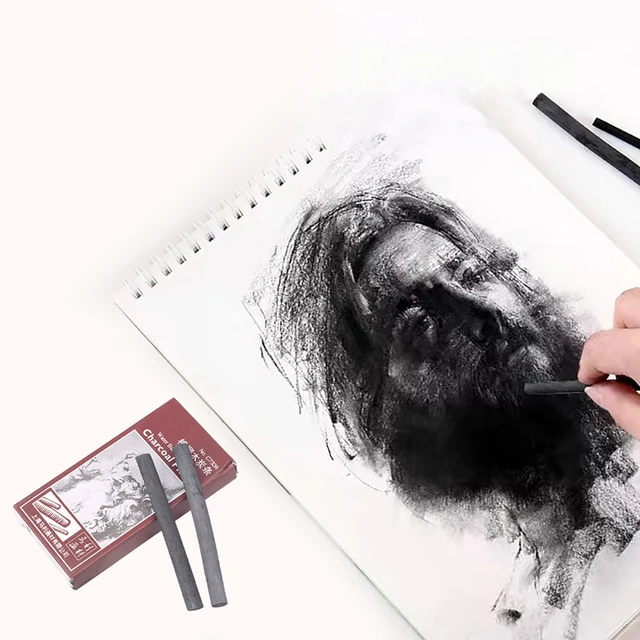 Personal Preferences and Testing
Personal Preferences and Testing
Ultimately, the best paper for graphite and charcoal mediums depends on personal preferences and artistic intentions. Testing various papers lets you discover which supports your techniques and aligns with your artistic vision.
Conducting small experiments or sketching studies on different types of paper can help determine what works best. Observe how each paper handles layers, erasing, and pressure variations. Testing multiple papers side-by-side can provide a practical perspective on their performance and suitability for your specific needs.
Final Thoughts
In 2024, artists are always on the lookout for the best drawing paper for graphite and charcoal, recognizing that the right paper can significantly enhance their work. The best drawing paper for graphite and charcoal offers the perfect blend of texture and weight, allowing for fine details and rich, deep shading.
The best drawing papers for graphite and charcoal mediums should accommodate their unique properties, allowing artists to achieve their artistic vision. Whether your preference lies with the crisp lines of graphite or the bold, diffuse strokes of charcoal, the right paper can enhance texture, depth, and overall impact. Considering factors such as texture, weight, and longevity will set the foundation for creating and preserving your artwork for years to come. With the right paper as your canvas, your creativity can flourish, bringing your visions to life in the best possible way.
